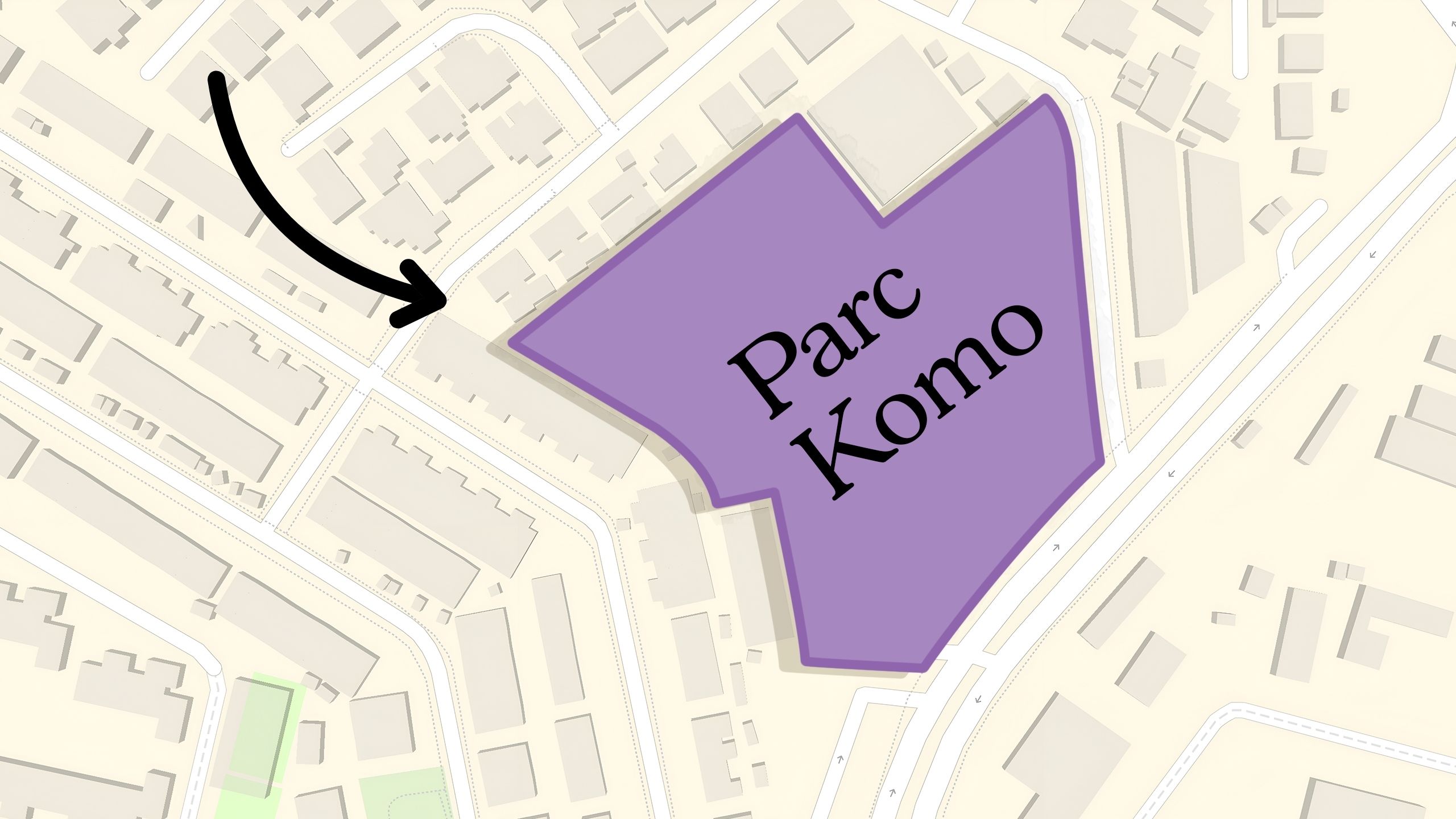The Hard Truth About Buying A Home With Your Partner In Singapore (Most People Don’t Talk About This)

Get The Property Insights Serious Buyers Read First: Join 50,000+ readers who rely on our weekly breakdowns of Singapore’s property market.
Cheryl has been writing about international property investments for the past two years since she has graduated from NUS with a bachelors in Real Estate. As an avid investor herself, she mainly invests in cryptocurrency and stocks, with goals to include real estate, virtual and physical, into her portfolio in the future. Her aim as a writer at Stacked is to guide readers when it comes to real estate investments through her insights.
When my partner and I started discussing marriage, one of the things we brought up was a prenup. Not exactly the most romantic conversation (and maybe even one that rubs some people the wrong way), but a necessary one.
Because here’s the thing: if you don’t decide how your assets should be handled in the unfortunate event that things go south, the Singapore courts will do it for you. And if there’s one thing I’ve learned through observing others, it’s that a decision not going your way could result in substantial financial damage.
Beyond the legalities, there’s also the emotional and practical reality of splitting up.
When a shared home is involved, things get even more complicated—who stays, who leaves, and what happens if neither can afford to keep it? In some cases, the fear of losing a home can even make people feel stuck in a relationship longer than they should be.
A Quick Look at Property Ownership Structures in Singapore
In Singapore, property ownership typically falls into three categories:
- Joint ownership
- Sole ownership
- Trust structures.
Choosing the right one is crucial. Your manner of holding determines how the interest in the property is distributed upon death or separation.
Since joint ownership is the most common choice for couples, that’s what we’ll be focusing on today. There are some other alternatives, such as placing a property in a trust, but given changes to stamp duties (e.g. ABSD now applies to some trust arrangements), these are less common today.
Why Most Married Couples Opt for Joint Ownership

Whether it’s an HDB flat or private property, most couples opt for joint ownership since combining incomes makes it easier to qualify for a larger home loan—thanks (or no thanks) to debt servicing ratios; but we’d take note of your Income Weighted Average Age (IWAA) if there’s a notable age disparity.
In any case, joint ownership isn’t a one-size-fits-all arrangement. There are two key ways to structure it, each with its own implications:
1. Joint Tenancy – The ‘What’s Mine is Yours’ Approach
This is probably the most common choice for married couples because it’s simple, secure, and leaves little room for uncertainty.
- Both co-owners own the entire property together rather than in separate shares. In effect, the law “sees” them as being the same entity.
- If one person passes away, their share automatically transfers to the surviving owner (this is called the right of survivorship).
- This means the surviving spouse doesn’t have to fight for ownership or navigate legal complications.
2. Tenancy-in-Common – For Those Who Like to Keep Things Separate
This is for couples who prefer defined ownership percentages.
- Each owner holds a specific share of the property—whether 50-50, 70-30, or even 99-1.
- No right of survivorship. If one owner passes away, their share is distributed according to their will (or intestacy laws if there isn’t one). Note that this means it’s possible for one spouse to end up co-owning the property with someone else, if the other spouse passes away (e.g. if the husband wills his share to his father, then it’s possible for the wife to end up co-owning the property with her father-in-law.)
- This setup is popular among couples contributing unequally to the property, or those who want their share to go to specific beneficiaries. If you’re contributing much more than your spouse, for example, you might feel entitled to a larger share of ownership.
What married couples should know is that owning a bigger share does not mean “more rights” over the property. Just because one spouse owns 99 per cent, for example, doesn’t mean they can kick out the other, or unilaterally make decisions like selling. For the most part, a higher percentage of ownership just means getting more of the sale proceeds.
On a related note, HDB owners also have the option to structure ownership as “Owner and Essential Occupier”.
For HDB buyers, there’s another option: one person owns the flat, and the other is just an “essential occupier.”
- The owner has full legal rights over the property.
- The essential occupier has no legal claim, even if they contribute financially.
- Since this is not a co-ownership, there is no right of survivorship. If the main owner passes away, the flat is distributed according to their will (or intestacy laws).
On paper, this sounds risky—so why do couples choose it?
Well, it’s a popular strategy for families planning to own a second property; but beyond that, it may also be relevant if one spouse can’t legally own any part of the flat (eg, if your spouse is a foreigner, they can’t own an HDB flat).
As for buying a second property, if the essential occupier isn’t technically an owner, they can buy a private property later without paying the Additional Buyer’s Stamp Duty (ABSD).
But here’s the downside:
- The essential occupier cannot use CPF to pay for the property.
- The entire mortgage burden falls on the owner, which means lower loan eligibility and higher cash requirements.
- The biggest risk? If the relationship ends, the essential occupier has no claim over the home, no matter how much they’ve contributed.
How does the pre-nup matter to all this?
More from Stacked
Can Lower-Income Singaporeans Better Afford HDB Flats In 2024? Here’s What The New Measures Mean
Since the news of the cooling measures in August, we've written about how it has impacted the middle-class group in…

A prenuptial agreement is a legal document that outlines how assets, debts, income, and financial responsibilities will be handled if the relationship ends. It may also cover matters like child custody and support, though those won’t be the focus here.
As you might have guessed from the above, the division of assets on paper may not reflect the reality of matrimonial assets.
You may have joint ownership of the home, or own only one per cent, and yet be the one paying most of the mortgage or other costs.
This may also be true of a second property: your spouse may be the owner in name only (to avoid the need for ABSD), whilst you pay the mortgage. But what happens if, in a divorce, they want to claim their share of the second property nevertheless?
Yes, the word prenup might bring to mind Hollywood divorces and ironclad contracts, but in reality, prenups aren’t about betting against your marriage—they’re about financial clarity in the event of a dispute between the couple.
They exist to protect both parties, not to leave one person high and dry. And if we’re being honest, money is one of the biggest sources of tension in relationships, so why not address it upfront?
It’s especially relevant if one party has inheritance money, business interests, or other financial commitments. Under Singapore law, once you’re legally married, most assets and debts acquired before the marriage automatically become matrimonial assets.
For property, this applies if it was:
- Used or enjoyed by one or both spouses (or their children) while they lived together, or
- Substantially improved during the marriage by either or both spouses.
In other words, these assets could be subject to division in a divorce.
But prenups aren’t legally binding in Singapore. Rather, they serve as a “manifestation of intention”— a reference point that the courts may consider when deciding how the matrimonial assets should be divided up.
Singapore courts have given recognition to prenups, in particular where they concern assets and property located overseas, and even when they have been drafted overseas (as long as they’re fair and reasonable).
But the final say rests with the judge, who will assess holistically how the matrimonial assets should be divided.
This is governed by Section 112 of the Women’s Charter, which requires the Court to order the division between the parties of any matrimonial asset in such proportions as the court thinks just and equitable.
Thus, a prenup can shape the conversation, but there are multiple factors, including the property ownership structure, which will be taken into account in determining who gets what.
In other words, a prenup may set the stage and provide certain insights into the intentions of the parties, but it’s not the final arbiter as to the outcome of the Court proceedings and how much each party will eventually get.
So… What’s the Point?
If a prenup isn’t legally binding, is it even worth the effort?
Well, yes—because it sets the foundation for financial clarity in the event of a dispute.

Instead of navigating tough financial decisions in the heat of an emotionally charged separation, a prenup allows both parties to align expectations early, while the relationship is amicable. Perhaps more importantly, it helps you plan your personal finances: in the event the marriage fails, for instance, you’ll know what to expect (eg, you’ll need to get your own home, or how much you’ll get from the existing one so you can budget accordingly).
As a general guide… What Goes Into a Prenup?
While you should speak to an experienced lawyer to help you draft the exact terms of your prenup agreements to protect your assets and interests, here are several matters that you may wish to consider:
- Full disclosure of current existing assets – Both parties should be upfront about their financial positions, and this should include existing properties, assets, investments and liabilities
- Future considerations – What happens if circumstances change? Think about children, career shifts, or new assets acquired during the marriage. Also, consider what happens in the event of job loss or medical inability to work.
- Debt Responsibility – if one party has significant liabilities, should the other be responsible? A prenup can outline how debts are managed.
- Exit strategy – This may obscure the vision through some folks’ rose-tinted lenses, but having a pre-agreed framework for asset division can prevent disputes later.
Conversations about finances and asset protection aren’t exactly romantic, but they’re necessary.
Whether it’s through a prenup, a well-planned ownership structure, or a mix of both, having these discussions early can prevent unnecessary stress, especially in cases where in-laws are skeptical!
More importantly, it forces couples to have an open, honest conversation about money before marriage, which, in some ways, can be just as valuable as the agreement itself.
If you’d like to get in touch for a more in-depth consultation, you can do so here.
Cheryl Teo
Cheryl has been writing about international property investments for the past two years since she has graduated from NUS with a bachelors in Real Estate. As an avid investor herself, she mainly invests in cryptocurrency and stocks, with goals to include real estate, virtual and physical, into her portfolio in the future. Her aim as a writer at Stacked is to guide readers when it comes to real estate investments through her insights.Read next from Homeowner Stories

Homeowner Stories I Gave My Parents My Condo and Moved Into Their HDB — Here’s Why It Made Sense.

Homeowner Stories “I Thought I Could Wait for a Better New Launch Condo” How One Buyer’s Fear Ended Up Costing Him $358K

Homeowner Stories How We Saved $300K And Got Our 4-Room Toa Payoh Flat in Just 7 Months

Homeowner Stories “I Didn’t Think Property Prices Could Go Up So Fast Anymore With ABSD” Why One Buyer’s Regret Still Feels Familiar Today
Latest Posts

Pro How Much More Should You Really Pay for a Higher Floor or Sea View Condo?

On The Market 5 Spacious 5-Room HDB Flats Under $600K You Can Still Buy Today

Property Market Commentary 7 Close To TOP New Launch Condos In 2026/27 For Those Looking To Move In Quick

Property Advice I Own A 55-Year-Old HDB Flat, But May Have To Sell — Can I Realistically Buy A Freehold Condo With $700K?

Property Market Commentary Why It’s So Much Harder For Young Singaporeans To Buy A Home Today

New Launch Condo Reviews Coastal Cabana EC Review: A Unique EC With Sea Views Priced From $1.438M

Property Market Commentary Which HDB Towns Sold the Most Flats This Year? The 2025 Rankings Reveal Some Surprises

Landed Home Tours We Toured a Freehold Landed Area Buyers Overlook — It’s Cheaper (and Surprisingly Convenient) From $3.2M

Singapore Property News The Hidden Costs of Smaller Homes in Singapore

Property Advice We Own A 2-Bedder Condo In Clementi: Should We Decouple To Buy A Resale 3 Bedder Or Sell?

On The Market We Found the Cheapest Yet Biggest 4-Room HDBs You Can Buy From $480K

Pro Why This Freehold Mixed-Use Condo in the East Is Underperforming the Market

Singapore Property News 10 New Upcoming Housing Sites Set for 2026 That Homebuyers Should Keep an Eye On

Singapore Property News Will Relaxing En-Bloc Rules Really Improve the Prospects of Older Condos in Singapore?

Property Market Commentary The Rare Condos With Almost Zero Sales for 10 Years In Singapore: What Does It Mean for Buyers?


